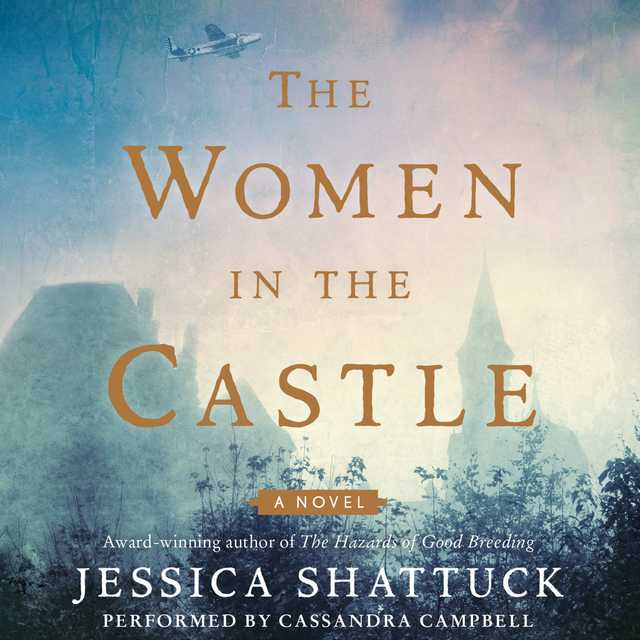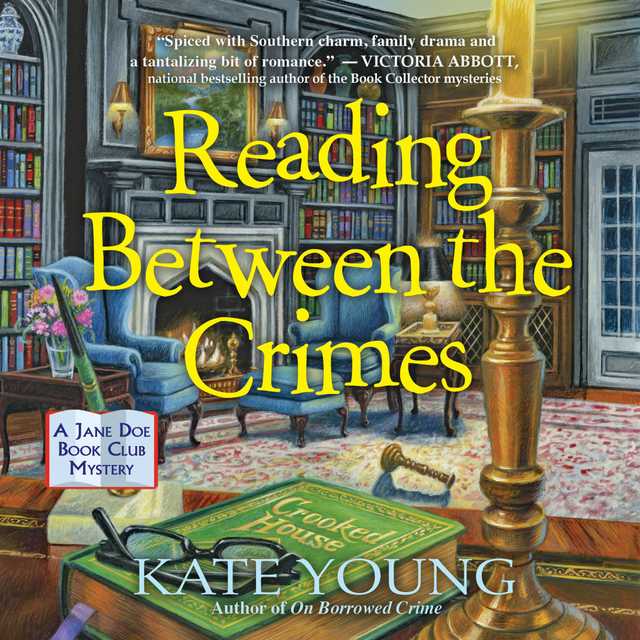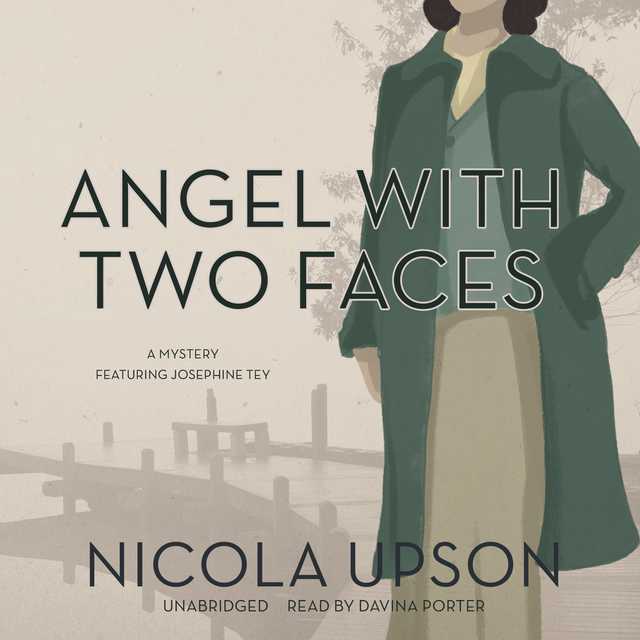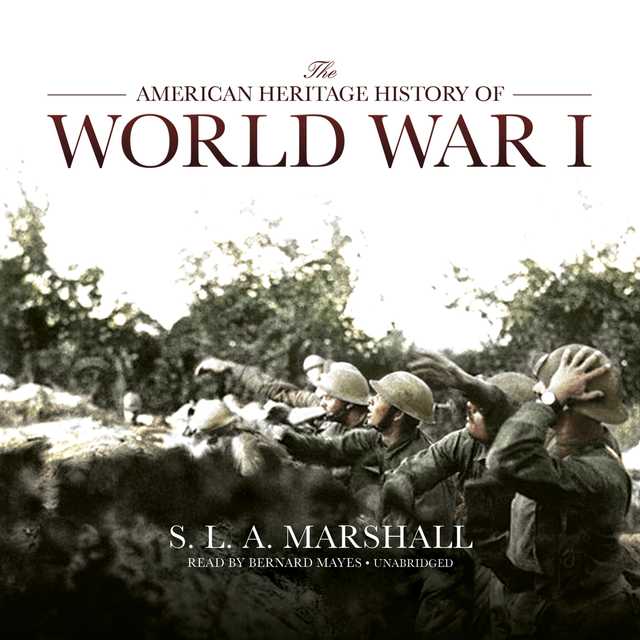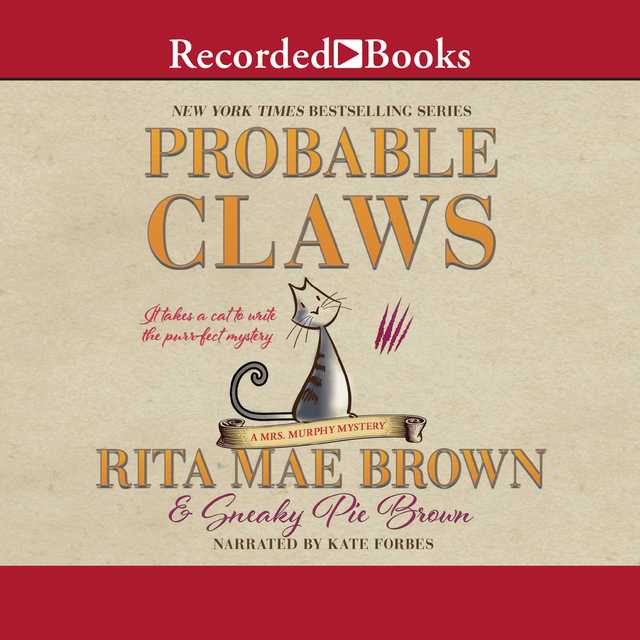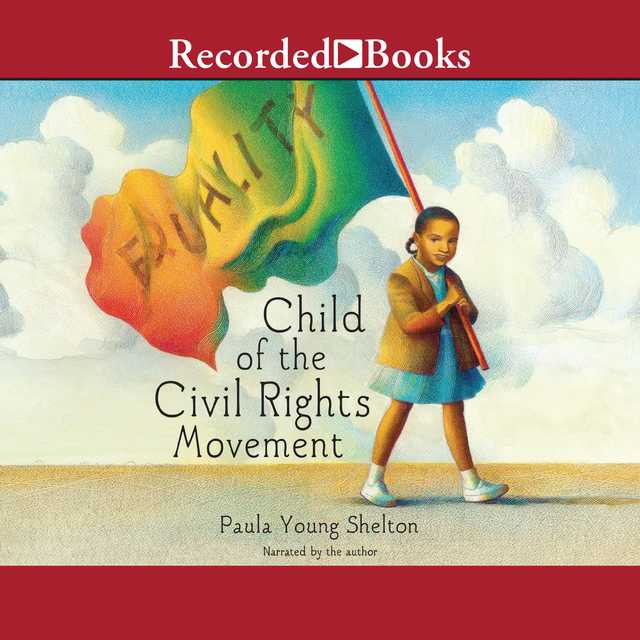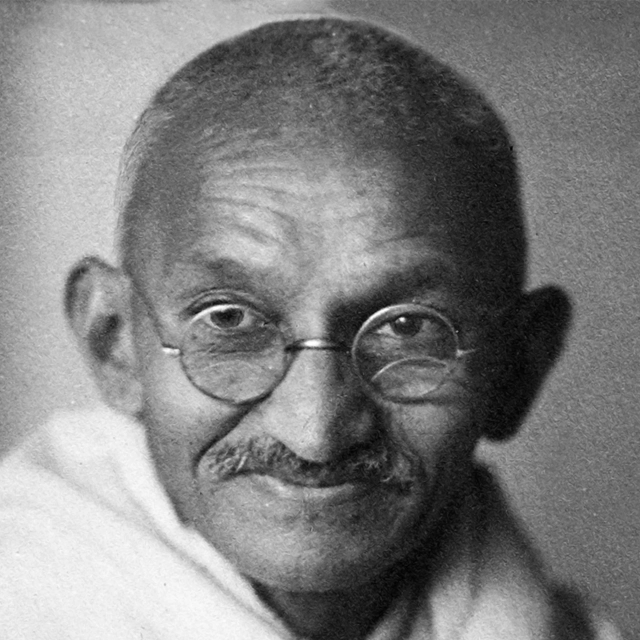The Women in the Castle Audiobook Summary
Three women, haunted by the past and the secrets they hold
Set at the end of World War II, in a crumbling Bavarian castle that once played host to all of German high society, a powerful and propulsive story of three widows whose lives and fates become intertwined–an affecting, shocking, and ultimately redemptive novel from the author of the New York Times Notable Book The Hazards of Good Breeding.
Amid the ashes of Nazi Germany’s defeat, Marianne von Lingenfels returns to the once-grand castle of her husband’s ancestors, an imposing stone fortress now fallen into ruin following years of war. The widow of a resister murdered in the failed July 20, 1944, plot to assassinate Adolf Hitler, Marianne plans to uphold the promise she made to her husband’s brave conspirators: to find and protect their wives, her fellow resistance widows.
First Marianne rescues six-year-old Martin, the son of her dearest childhood friend, from a Nazi reeducation home. Together, they make their way across the smoldering wreckage of their homeland to Berlin, where Martin’s mother, the beautiful and naive Benita, has fallen into the hands of occupying Red Army soldiers. Then she locates Ania, another resister’s wife, and her two boys, now refugees languishing in one of the many camps that house the millions displaced by the war.
As Marianne assembles this makeshift family from the ruins of her husband’s resistance movement, she is certain their shared pain and circumstances will hold them together. But she quickly discovers that the black-and-white, highly principled world of her privileged past has become infinitely more complicated, filled with secrets and dark passions that threaten to tear them apart. Eventually, all three women must come to terms with the choices that have defined their lives before, during, and after the war–each with their own unique share of challenges.
Written with the devastating emotional power of The Nightingale, Sarah’s Key, and The Light Between Oceans, Jessica Shattuck’s evocative and utterly enthralling novel offers a fresh perspective on one of the most tumultuous periods in history. Combining piercing social insight and vivid historical atmosphere, The Women in the Castle is a dramatic yet nuanced portrait of war and its repercussions that explores what it means to survive, love, and, ultimately, to forgive in the wake of unimaginable hardship.
Other Top Audiobooks
The Women in the Castle Audiobook Narrator
Cassandra Campbell is the narrator of The Women in the Castle audiobook that was written by Jessica Shattuck
Jessica Shattuck is the New York Times bestselling author of The Women in the Castle, The Hazards of Good Breeding, a New York Times Notable Book and finalist for the PEN/Winship Award, and Perfect Life. Her writing has appeared in the New York Times, The New Yorker, Glamour, Mother Jones, and Wired, among other publications.
About the Author(s) of The Women in the Castle
Jessica Shattuck is the author of The Women in the Castle
More From the Same
- Author : Jessica Shattuck
- The Hazards of Good Breeding
- Publisher : HarperAudio
- Abraham
- American Gods [TV Tie-In]
- Dead Ringer
- House of Sand and Fog
- Prey
The Women in the Castle Full Details
| Narrator | Cassandra Campbell |
| Length | 12 hours 38 minutes |
| Author | Jessica Shattuck |
| Category | |
| Publisher | HarperAudio |
| Release date | March 28, 2017 |
| ISBN | 9780062657381 |
Subjects
The publisher of the The Women in the Castle is HarperAudio. includes the following subjects: The BISAC Subject Code is Fiction, Historical
Additional info
The publisher of the The Women in the Castle is HarperAudio. The imprint is HarperAudio. It is supplied by HarperAudio. The ISBN-13 is 9780062657381.
Global Availability
This book is only available in the United States.
Goodreads Reviews
Will
January 12, 2022
Suddenly she saw everything in its harsh, naked state. She felt the pulse of the lives lived inside the mean little house she passed: selfish or generous, kind or unkind, ugly or tolerable, almost all of them sad. And she saw the histories of the people passing by like x-rays stamped on their faces—ugly, mutinous tracings of dark and light: a woman who had ratted out a neighbor, a man who had shot children, a soldier who had held his dying friend in his arms. Yet here they were, carrying groceries, holding children’s hands, tuning their collars up against the wind. As if their moments of truth—the decisions by which they would be judged and would judge themselves—hadn’t already come and passed. What a sham this new German present was! An irrelevant time—a mad scramble to cast votes after the verdict had already been reached. What did you know and when did you know it? And just as importantly, what did you do once you knew? We have seen umpteen films about World War II, read a gazillion books. But for most of us, certainly in the English-speaking world, what we have seen and read is almost always from the perspective of the victor. The Women in the Castle begins during the war, but is mostly about the post-war period, for Germans, particularly the three women of the title. It is a new, fascinating perspective that offers great insight into a subject that has received too little literary attention. It is moving, perceptive, engaging and thought-provoking. Jessica Shattuck - from her site – Photo by Dorothea von HaeftenWe are introduced to two of the three central women in 1938. Burg Lingenfels is an old castle, in poor repair. The Bohemian countess whose digs it is hosts salons for a select set. This group is none too happy with the turn being taken in the nation. A handful decide to form a resistance. One of the plotters is Connie Flederman, a charming gentleman, officer in the Abwehr, and bff of Marianne von Lingelfels, niece-in-law of the countess, and actual hostess of the party. She and Connie had been best buds since childhood, and she had expected that they would be together forever, so it had come as a huge shock when he married some sweet young fraulein, Benita Gruber. Marianne married her college professor, Albrecht, one of the plotters. Marianne's promise to the men that the women will support them drives her to help those women later. The activities of the resisters are not covered in detail, but function to bring the women together. Marianne is central, the organizer. Named by the conspirators commander of wives and children, to see to the care of the widows and children of the resistors should the worst happen, and charged in particular by Connie to take care of Benita and their son, Martin, Marianne takes her pledge very, very seriously. The women are gathered at the castle of the book's title. She uses her connections to track down Benita and Martin after the war. An American occupation officer finds the third woman, Ania Grabanek, from a list of women Marianne had given him. Ania had not known Marianne prior to the American finding her, but she and her children are brought in nonetheless. From the 1948 Roberto Rossellini film Germany Year Zero - from Indiewire.comThrough the interweaving of the women’s stories we get a look at post-War Germany. We even get a taste of post-WW I Germany in the recollections of one of the women. As widows of men who had opposed Hitler, they are in a better position with the occupation forces than many, but there is plenty of hardship to go around. And, as opponents of Hitler, some paid a price before the war ended. Aspects of war-time are related in retrospect, including things like having to be particularly tight-lipped around anyone not known to be part of the resistance. We see a perspective from people who were influenced by Nazi fantasies of a bright future, but on seeing enough of what was really going on, bailed. In one chilling scene a woman picks up goods from a reassignment store, slowly realizing whose goods had been reassigned. Orphaned children were given new last names if their own names were deemed insufficiently Germanic. A prolonged period of deprivation impacts children’s development.There were plenty of challenges in the immediate post-war period. Women were imprisoned by some occupation forces as sexual slaves. People newly released from German camps were wandering the areas nearby desperate for food, and willing to do whatever was necessary to get some. The locals were required to watch documentary films showing the horrors of the concentration camps. The sorts who then refused to believe what was shown echoes alarmingly today as truth continues to make little impact on closed minds. As with most wars, the supply of men is much reduced, making it a challenge for many women to find suitable mates. And even among the survivors the scars of war can make emotional intimacy problematic. There is also considerable guilt to deal with. And how is one to cope with a de-Nazification program that leaves so many known Nazis in positions of power? And later, coping with the challenges of a new world, resenting those who have never suffered. Unlike her half-brothers, Mary had grown up without typhoid and diphtheria and rape. She had not been pressed into overcrowded trains and transport vehicles and fetid, swarming, waterless DP camps full of war-hardened souls. She had always had school, and clothing, and medicine, and a roof over her head. And most of all she had never had to lie. There is considerable guilt to deal with. And sometimes it might be better not to know. All a question gets is an answer, and in her experience you don’t always want those. As a gardener, she knows that if you turn over a rock, you will find some worms and potato bugs. Sometimes even a snake. And as a German, she knows that if you start poking through a shoebox of photographs, you’ll find Nazi uniforms and swastikas and children with their arms raised in Heil Hitler salutes. There are also uplifting moments of beauty and hope. A struggling mother finding warmth and joy in camaraderie with others in the same boat. A Christmas celebration in a town summons the realization that music is essential to the human soul. Families reunite.Allied posters in 1945 Germany (These atrocities: Your fault!”) promoted collective guiltThere is much story-telling talent here, with a minimum of flashiness. Cows are parted from their calves. A damaged crow stands in for a harsh disappointment. There is some chronological back and forth as each of the women recall their past. There is the occasional flash forward that lets us know where this one or that one winds up. The action begins in 1938 with the plot, stays mostly with the immediate post-war period, then jumps ahead to 1991 to finish. I was not smitten with the jump to the near-contemporary. And was not persuaded that the care given to a particular grave over a long period of time would have taken place. It is a delicate balancing act, engaging us in the stories of the three women while also showing what Germany was like in the years after the war. Although the women definitely gain our interest and sympathy, I felt distant from them at times. Maybe that is what the author intends. They are flawed, and very human. They are damaged, and some have inflicted damage as well. The Women in the Castle is a remarkable portrait of a beaten nation coping with its defeat. It offers insight into what the survivors of the war in Germany faced, how they coped, and sometimes failed. While there are moments of horror here, the book is more one of very human beings attempting to move on with life, even to build new lives, with and despite one another, during a very trying time. Physical survival is paramount, of course, but they also struggle with trying to gain or sustain emotional and moral lives, battles with huge stakes. How the relationships of the three women form, grow, and change is both heart-warming and heart-breaking. They function as much more than stand-ins for German guilt.You will not only find an emotional journey here, but will see a piece of history from a different and illuminating perspective. You will not need a Marshall Plan to help you through this. The Women in the Castle is a very satisfying, unusual, and worthwhile read all on its own.Review first posted – October 28, 2016Publication dates----------April 4, 2017 - hardcover----------January 2, 2018 - trade paperback =============================EXTRA STUFFLinks to the author’s personal and FB pagesMarch 24, 2017 - NY Times - Shattuck writes of a painful part of her history - I Loved My Grandmother. But She Was a Nazi.Other books by Jessica Shattuck-----A Perfect Life - 2010-----The Hazards of Good Breeding - 2004 A nifty list of indie Post-War films
Elyse
November 18, 2019
The storytelling grabs you IMMEDIATELY!!! I LOVE IT!!!!!This tour de force of historical imagination is set primarily in Germany before during and after WWII focusing on the lives of three women and their children. You'll meet Marianne, "The Commander of the wives and Children. Marianne was married to Albreht Von Lingenfels, from a long line of revered German Generals, who wanted to help bring Hitler to the court of law with the support of the outside world. Connie Fledermann, from an old once-rich junker family, was another character you'll meet early in this story. My image of this great man never 'ever' left me! Still hasn't. I credit, author Jessica Shattuck for this powerful-memory-achievement. With 'very' few words she kept a character alive for me.... who dies early through the rest of her storytelling. Connie and Albreht had spent a few years working together assisting victims of the national Socialists-Jews who wanted to emigrate, imprisoned Communists, artists whose work were banned. Both men, Albreht and Connie, friends with a purpose,....understood how the world saw their country...and were shameful to be associated with Germany this way. But it was Connie who had given up on the law-- he was a believer in direct action. He felt it was his duty to actively work to defeat Hitler. Marriane was married to Albreht: They had 3 children: Fritz, Elizabeth, and Katharine.Connie was Marianne's oldest friend. Connie held Marianne in the highest regard ...his sternest advisor...the person who keeps him most honest. Sometimes - I was sad that he and Marianne never married ( silly thought I guess).... but I really admired and felt the depths of their male/female friendship. Powerful- special - beautiful --- and cut short. Connie and Albreht both were hung in the war. The Prologue in "The Women in The Castle", is sooooooo good!!! I read it 3 times. The 3rd time I read it was after I finished the entire story. I've been so tempted to include in excerpt I like so much from the prologue-- ( I've debated and debated)..... but have chosen not too.....but I felt it was very special and literally sprinkled love, honor, dignity, and purpose throughout the rest of the novel. Marianne was raised to value education more than domesticity. Not particularly a knockout beauty - but she was part of the men's conversations. "Marianne was the last man standing". Men trusted and respected who she was! Had Marianne been a man, she would have been killed too. Benita was younger - physically beautiful....with no interest in politics. Connie once told Marriane that Benita "is a simple girl and she won't deserve whatever mess I might drag her into". Connie asked Marianne to promise to look after Benita and their - not yet born child - if anything should happen to him. Martin Constantine Flederman was Connie and Benita's child. His name was changed to Martin Schmidt...as all the children of the war were: "good, ordinary, German names". Marianne could never have predicted years ago just how much she would be involved with watching over Benita and her son Martin. Ania Grabarek and her two sons Anselm and Wolfgang also are a part of this story. Anita's husband was in the Polish Foreign Office before the war, and then in the military, and then in the Home Army.... then sent to an extermination camp. Burg Lingenfels was once a beautiful grand Castle. Before the war Marianne's husband, Albreht's, great aunt, Frau von Lingenfels, The Countress, owned it. She didn't live in it – – but she organize parties and picnics. She was something of an eccentric. After the war....the Castle was run down - empty of fine furniture- damp - cold. They did have a roof over their head and they live mostly in the kitchenYou get to know the children - and given that the children had a father who was a traitor- a man that wanted to kill Fuhrer.... it was important to educate the children about the reasons their father's were killed. Could they do this without being prejudice? Martin's father, Connie, lived in the shadow as a hero, from the teachings of Marianne- yet his own mother never mentioned him. Benita spent time in prison because of what her husband did. Marianne never had to. So - we see early that the moral issues of being a traitor in ones own country - has many different points of view and emotions tied to those opinions and emotions. As the story goes on- we learn more of what happen to each of these women - Marianne - Benita - and Anita each had different background experiences. Everyone has been damaged by the horrors of this war.Jessica Shattuck invites us to take a deeper look at personal responsibility.....blame - shame - dishonor - and moral conscience. We look at the other side too - honor - loyalty - and love. The one thing Marianne, Benita, and Anita, had in common is that each of their husbands were killed in this war. They had children to raise. Their future choices in part two begin to move them in different directions- yet as they were rebuilding their individual lives - the time spent in the early days after the war together in the run down Castle bonded them... whether they liked each other or not. Everyone was growing and changing. The children too - becoming young adults - then adults! I was on the verge of tears several times. This is one of the best historical books I've read where we see how much German's suffered - not just Jews. German's were aching watching others suffer...Many went hungry -- lived without water and electricity... but still were grappling with the moral questions of right and wrong!With so much vivid sensory detail and intimacy, I always looked forward to getting back to my reading - between life breaks.
Angela M
February 06, 2017
I started reading this a couple of days after Holocaust Remembrance Day and on that day I thought about how it should be remembered more than on just one day each year . This is why I really believe that reading books about WWII and the Holocaust is so important. This book certainly made me remember the horrors of what happened during WWII , but this was from a perspective that we are not used to reading from. The war and what happened to so many looms in the background but is always there. The focus in this novel is on the German resistors who believed that what Hitler and the Nazis were doing was horrific and immoral. Their belief was so strong that they thought the only way to stop him was to assassinate him. Their failed attempt resulted in their executions. But this is the story not of the bold, brave German resistors but of the wives and children left behind. The three women here are each bold and brave in their own ways, but yet each has their own flaws as well . Their lives become intertwined after the war. Marianne von Lingenfels is told by her best friend , Connie "You are appointed the commander of wives and children." She definitely becomes their commander as she finds Connie's wife Benita and their son, Martin, Ania and her children, survivors of another resistor. An old castle belonging to Marianne's husband's family becomes their place of refuge. With chapters that move around in time , the lives of these women unfold and it becomes clear to the reader, but not necessarily to Marianne that these two women have secrets and pasts that are very different than the privileged life she led before the war. Their stories are chilling at times and Marianne's efforts to save and protect them, although in good faith, seem a bit heavy handed. What this novel has brilliantly done is depict the lives of these women before the war in the flashback chapters and of course afterwards, giving a view on the Germans , that I have not often read about. Their relationships are complex and the story is heartbreaking at times. It spans a period of time over 50 years and even to the end it is apparent what the war has done these people. It's a well written and captivating story. I received an advanced copy of this book from HarperCollins through Edelweiss.
Norma
January 22, 2020
I found this to be a dramatic and an uniquely told story that gave me a new understanding and a different perspective on this time period of World War II that I have never experienced before while reading a Historical Fiction novel.THE WOMEN IN THE CASTLE by JESSICA SHATTUCK is an intriguing, powerful, difficult, and thought-provoking read about the struggles and relationships of three widowed women. Their lives and fates become intertwined by a vow that our main character, Marianne made to her husband and best friend to find and protect these women and their children if a plan that they were involved in as resistors failed.JESSICA SHATTUCK delivers an extremely vivid and well-written read here from the perspectives of three interesting and memorable women. We follow along their stories from their past and present lives together leaving me feeling frustrated and heartbroken at times. I liked each of our main characters equally, Marianne, Ania and Benita although, it did take me a little while to warm up to them but once I did, I became fully involved in this story as I learned more about them and the history surrounding this time period. I must admit though a few times throughout this story I did struggle with some of the historical aspect of this novel as I found the timelines and places a little confusing at times. But, when I got to Part 2 of this novel it was much easier to follow along with the storyline and all the characters involved. I do wish that I was given a little more insight and background into some of the information that was given to us in Part 1 of this novel though as I believe I might have been able to enjoy this book a little bit better. To sum it all up, this was an enjoyable and a very interesting historical fiction novel with a fantastic cover that had me totally engrossed in each of these characters lives. As I was learning about these women’s challenging personal experiences and contemplating some unimaginable decisions that they made to the heartwarming and satisfying ending. Would recommend!All of Brenda’s and my reviews can be found on our sister blog: https://twosisterslostinacoulee.com
Fran (apologies...way behind)
June 01, 2017
Burg Lingenfels Castle is the setting for a yearly gathering of German aristocrats. The countess of the castle has always encouraged intellectual sparring on liberal, bohemian or risque topics. Niece-in-law Marianne von Lingenfels hosts the festivities. Marianne's husband Albrecht, a university professor, and family friend Connie Fledermann, along with several other male guests are engaged in serious discussions in the study. Focusing on the world at large, Albrecht and Connie determine that they cannot sit back and allow Hitler to continue his policies. An assassination plot will be planned. Marianne, upon hearing the discussion, promises the full support of the wives. Connie asks her to be "commander of wives and children" if the plan goes awry. She readily agrees.1944. The attempt on Hitler's life has failed. Albrecht, Connie and other conspirators are executed. Albrecht von Lingenfels was a descendant from a long line of revered generals. Perhaps this protected wife Marianne from scrutiny. Marianne began her search for war widows and children of conspirators. She located Connie's son Martin in a Children's Home where instructors taught the doctrine of racial purity. Benita, Connie's wife and Martin's mother, had been repeatedly raped but was now mistress of a Red Army Captain, hoping he would make inquiries about Martin. Marianne was able to reunite mother and son and bring them to the Bavarian castle.A second widow, Ania Gruber with children in tow, was rescued from a displaced persons camp. Now three widows with their children lived in the castle. Widow co-dependence was based upon need. Each one had secrets and a cross to bear.Marianne was a product of a strict Prussian upbringing. She was organized and efficient. Benita Fledermann was a country bumpkin and the love of Connie's life. Having a delicate nature, she was traumatized by her captivity and separation from Martin. Her health was compromised and she needed to regain her strength. Ania was a mystery. Having fled the Red Army, Ania and sons embarked upon a journey, hiding in the forest or walking toward the next piece of bread or place to rest. Ania and her children never smiled, seldom spoke. Three widows with children trying to deal with the stark realities of the present, haunted by secrets of the past."The Women in the Castle" by Jessica Shattuck showcases three women who find difficulty coming to terms with their individual guilt and shame during World War II. The secrets they keep prevent healing from personal trauma and overall crimes against humanity.Thank you Bonnier Zaffre Publishing and Net Galley for the opportunity to read and review "The Women in the Castle.
Sam
February 07, 2017
World War II novels are seemingly never out of style, and the public appetite for them is insatiable. Besides the pantheon of classic and important reads from nonfiction to darkly comic war novels to demo-crossing YA reads, for the past three years a WWII book with a special alchemy has penetrated public consciousness and been THE BOOK you must read: in 2014, All the Light We Cannot See; 2015, The Nightingale; 2016 (on a smaller scale), Lilac Girls. This is a book that has great storytelling, engages with WWII in a new and fresh way, and ultimately provides a real emotional connection with the majority of readers, knowing how things turn out in a grand sense but intimately involved with the fates of these particular characters. What will be THE World War II book for 2017? My money's on The Women in the Castle.The Women in the Castle takes a very familiar subject and turns the focus on a group not typically solicited for lead roles in WWII fiction: German women, struggling on the homefront during the war and then more importantly tasked with putting themselves, their families, and a nation back together after the war, rebuilding while also understanding and acknowledging their grief and guilt. Shattuck achieves that mystical alchemy needed for a WWII novel to be book club bound and verbally passed along amongst friends and coworkers: solid storytelling, characters you're invested in, larger ideas and moral questions and engaging with history in a fresh way.Shattuck's prose is clear and accessible, nothing overly flowery or fancy, but descriptive enough to draw you into the proceedings. I had been hopping between reads, nothing fully drawing me in, until I started The Women in the Castle and was immediately hooked and then hurtled through at great speed. She is able to balance establishing characterization and storytelling elements with moving the plot forwards and backwards in time and via different perspectives. That can be a difficult thing to do, and indeed can cripple a reading experienice if poorly executed. But Shattuck's narrative descisions are easy to follow along, and become almost necessary and hungered for by the reader: she'll pull on a thread in one chapter, drop a bombshell secret in the next, making us desparate to find out how and when this all happened and she's anticipated our need to understand with an appropriate change in time and perspective. From that angle, her writing is extremely confident and successful. But her descriptions are also very well done, and her scenes can haunt you as her characters encounter subtle or blatant evil and horror of the Holocaust or the war in general.I won't go into the plot too much - the blurb is lengthy and comprehensive - but I will say that Shattuck's three lead characters are all extremely memorable women, for very different reasons. The story of their fledgling friendship out of tragedy (all are widows after the failure of Operation Valkyrie, the mission to assassinate Hitler) and the tests and strains those bonds face and undergo as they carve out collective and individual lives in the war's aftermath is as compelling as the larger tale of the defeated German nation dealing with grief and guilt post war, as wel their silence and complicity and hunger and deprevation and sexual assault and violence. Marianne, Benita, and Ania all have flaws, all fragile and doing their best to move forward from the pain incurred and endured, and not always able to completely escape it, but certainly always trying, with help of their comraderie and their love for their children. And each woman faces her past and her guilt quite differently, and judges her friend differently as well, leading to some heartbreaking conclusions and outcomes.Finally, by placing the perspectives with German women, Shattuck is somewhat inverting standard paradigms of the evil Germans who were all Nazis, and inviting us to understand through the different characters what life was like for ordinary and extraordinary Germans during this period, how some could choose to act against Hitler boldly while most either openly supported his ideas without understanding until too late what his coded language meant and the real world implications of that rhetoric and ideology being absorbed so easily and readily. And what the postwar period meant for the German people, fear of confronting their dark guilt and shame, but needing to in order to gain peace or redemption or forgiveness or something, the blame and responsibility shifting according to each character and their own history and action and inaction.While it may not quite attain the literary highs or mass adoption that All the Light We Cannot See did, The Women in the Castle is a great addition to recent WWII fiction, and from its very different vantage point feels fresh from what has come before. Well paced, plotted, and told, I think The Women in the Castle has the right ingredients to find a highly interested audience hungry for new tales from this period. Highly recommended for historical fiction fans of WWII era, and 4 stars for me. -received an ARC on edelweiss, thanks to William Morrow
Lindsay - Traveling Sisters Book Reviews
May 04, 2017
4 stars! This was an intriguing and important WWII novel that I thoroughly enjoyed.This book tells the story of the connection of three very different women living in a German castle before, during and after WWII – the novel examines their struggles, secrets, motherhood challenges, hopes and relationships that helped them endure these grueling years. I liked each of the main characters, Marianne, Ania and Benita. They each grew on me more and more as I read further into their personal backgrounds and history. A few times throughout the story, I did find myself feeling a bit lost which is my reason for taking away one star. I found the place names and some of the historical references were slightly confusing at times. I had to go back a chapter and confirm dates several times to ensure I was following the timeline properly as each chapter skips to a new time and location. For this reason, it was a book I needed to take the time to fully immerse myself in, avoiding any outside distraction. I also wish there would have been more depth given to the resistance fighters and what their specific missions and goals were (we knew the main goal). I found that part of the story very interesting but I finished the book feeling hungry for more detail and understanding of exactly what their plans were and how they would go about it (perhaps this is just me though because I always find myself strongly drawn to stories of the resistance fighters – how brave and heroic they were!). A couple quotes that stood out to me were:“…Martin would try to find the words to articulate the power of togetherness in a world where togetherness had been corrupted – and to explore the effect of the music, the surprising lengths the people had gone to to hear it and to play it, as evidence that music, and art in general, are basic requirements of the human soul.”One of the main characters’ personal emotions when seeing a starving, beat down woman at a concentration camp. “But once, it had been the face of a mother or wife. Possibly of a sister or an aunt or a best friend. And underneath the layers of time, the face of someone’s child, a girl some mother diapered and fed and held.” Simply heart breaking.Overall, this was a captivating historical fiction story that I would highly recommend!
Tammy
July 25, 2016
As I read the first several pages of The Women in the Castle, I knew that this was going to be a good read. What I didn't know was how very good it was going to be. The story follows three widows during the years after World War II. These women are very different people with different strengths, flaws and secrets. They are alike in that they are all German trying to live with what they did or didn't do and the guilt or "moral clarity" that accompanies their actions. Devastating. I highly recommend The Women in the Castle.
Bam cooks the books ;-)
November 26, 2016
In this remarkable work of WWII historical fiction, Shattuck tells the story of three German women whose husbands were resistors and were killed for planning the assassination of Hitler. The prologue introduces us to the von Lingenfels family on the night of their annual party--November 9, 1938--the night that would later be called Kristallnacht. The men had slipped into the office at the castle to discuss their plans, when Albrecht von Lingelfels' wife Marianne interrupts. Her childhood friend, Martin Constantine Fledermann, known to his friends as "Connie", appoints Marianne "the commander of wives and children." At the time she feels a little belittled but later she would replay that last night in her mind, long after both Albrecht and Connie were dead, as well as half the people at the party that night, and takes seriously the responsibility to find and care for the families of the resistors. She first locates Benita, the beautiful young wife of Connie, who is being held and used by Russian soldiers in Berlin. Then she locates Connie's son, Martin, in a German orphanage. Although the castle is in ruins, a few rooms are still inhabitable and a local farmer provides them with vegetables and eggs. Later she is notified that another name on her list has been identified by American soldiers as residing in a Displaced Persons Camp and Marianne travels there to extend an offer to Ania and her children to join their little group of survivors. Through their experiences, we get to know these three woman extremely well--their past, their secrets, their hopes for a new life--and the reader will not soon forget these remarkable characters as they suffer through post-war horrors.Many thanks to the publisher William Morrow for providing me with an advanced reader's copy of this remarkable new work of historical fiction written from the unique point of view of three German women who struggled to survive the war and its aftermath against all odds.
Tania
May 01, 2017
She half knew - but there is no word for that. She knew it the way you know something is happening far away in a distant land, something you have no control over...One of the things I really liked about this book is that it provided some insight into how Germans lived after WWI, and why some of them became Nazis. It also looks at the guilt experience after WWII. Through the three main characters, Marianne, Benita and Ania we are shown very different lives in this same harsh setting, and how people could make very different choices in the same situation. I though Marianne's was very well written, but Ania's story was the one that was most interesting. They are all beautifully flawed. A thought-provoking HF novel about the cost of survival. Highly recommended.The Story: The Women in the Castle tells of the relationship between three women, each of whom suffers loss and tragedy during and after World War II. It’s a story of secrets that are held in for decades—secrets that affect relationships.
Most Popular Audiobooks
Frequently asked questions
Listening to audiobooks not only easy, it is also very convenient. You can listen to audiobooks on almost every device. From your laptop to your smart phone or even a smart speaker like Apple HomePod or even Alexa. Here’s how you can get started listening to audiobooks.
- 1. Download your favorite audiobook app such as Speechify.
- 2. Sign up for an account.
- 3. Browse the library for the best audiobooks and select the first one for free
- 4. Download the audiobook file to your device
- 5. Open the Speechify audiobook app and select the audiobook you want to listen to.
- 6. Adjust the playback speed and other settings to your preference.
- 7. Press play and enjoy!
While you can listen to the bestsellers on almost any device, and preferences may vary, generally smart phones are offer the most convenience factor. You could be working out, grocery shopping, or even watching your dog in the dog park on a Saturday morning.
However, most audiobook apps work across multiple devices so you can pick up that riveting new Stephen King book you started at the dog park, back on your laptop when you get back home.
Speechify is one of the best apps for audiobooks. The pricing structure is the most competitive in the market and the app is easy to use. It features the best sellers and award winning authors. Listen to your favorite books or discover new ones and listen to real voice actors read to you. Getting started is easy, the first book is free.
Research showcasing the brain health benefits of reading on a regular basis is wide-ranging and undeniable. However, research comparing the benefits of reading vs listening is much more sparse. According to professor of psychology and author Dr. Kristen Willeumier, though, there is good reason to believe that the reading experience provided by audiobooks offers many of the same brain benefits as reading a physical book.
Audiobooks are recordings of books that are read aloud by a professional voice actor. The recordings are typically available for purchase and download in digital formats such as MP3, WMA, or AAC. They can also be streamed from online services like Speechify, Audible, AppleBooks, or Spotify.
You simply download the app onto your smart phone, create your account, and in Speechify, you can choose your first book, from our vast library of best-sellers and classics, to read for free.
Audiobooks, like real books can add up over time. Here’s where you can listen to audiobooks for free. Speechify let’s you read your first best seller for free. Apart from that, we have a vast selection of free audiobooks that you can enjoy. Get the same rich experience no matter if the book was free or not.
It depends. Yes, there are free audiobooks and paid audiobooks. Speechify offers a blend of both!
It varies. The easiest way depends on a few things. The app and service you use, which device, and platform. Speechify is the easiest way to listen to audiobooks. Downloading the app is quick. It is not a large app and does not eat up space on your iPhone or Android device.
Listening to audiobooks on your smart phone, with Speechify, is the easiest way to listen to audiobooks.

